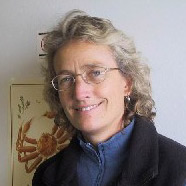Metabolic and growth physiology
Metabolic and growth physiology
Early life history stages of the Northern spot shrimp Pandalus platyceros

Project Details
- Keywords: Ocean acidification, shrimp physiology, larval biology
- UAS Program Area: Biology
- Principal Investigator: Sherry Tamone, Ph.D.
- Project Period: May 2018–May 2020
Funding Sources
- Alaska College Seagrant Program: $88,197
Abstract
Northern spot shrimp Pandalus platyceros are commercially important shellfish harvested primarily off the coasts of Oregon, Washington, British Columbia and Alaska. This is a relatively deep-water crustacean species that has a protandric lifestyle; all juveniles become functional males and undergo a transitional stage before becoming a larger reproductive female. Prior studies have focused on stocks off the coasts of Washington and British Columbia and while the life history events are shared by Alaskan populations, the timing and duration of the specific events differ most likely because of temperature differences. For example, detailed studies exist on the protandric life history of P. platyceros that describe the differentiation of males to females over a 3 or 4 year period and that females reproduce each year for 2 or 3 years. (Hoffman 1972). We have determined that females reproduce every other year in Southeast Alaska most likely because of colder marine environment. Likewise, the duration of the planktonic zoeal stages is said to occur over one to three months in California and Washington populations and the larval duration of Alaskan populations remain unknown. While the fishery in regions of Southeast Alaska have experiences declining catches, Washington fisheries (both commercial and sport) remain variable but robust. It is extremely likely that the success of P. platyceros populations is dependent on a range of environmental and ecological factors; not the least of which is a stable ambient environment. The objectives of this project are to investigate early life history traits (growth and energetics) of a data poor and commercially important Alaskan shellfish species; Northern spot shrimp Pandalus platyceros. Additionally we will investigate energetic costs of this species living in a changing environment.